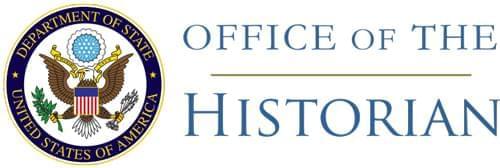Sir Mortimer Durand
to Mr. Loomis.
British
Embassy,
Lenox,
Mass., October, 1,
1904.
No. 176.]Sir: I have the honor to inform you that I have
received a dispatch from the Marquess of Landsdowne forwarding the
recommendations of Messrs King and Tittmann, the commissioners appointed
to carry out the delimitation of the Alaska boundary in so far as it was
left undefined by the London Tribunal.
A copy of the report drawn up by Messrs. King and Tittmann is inclosed
herewith.
The Canadian government are satisfied with the proposed line, which they
consider follows sufficiently closely the straight line joining the
points designated as “T” and “P” in the Alaska boundary award and on the
maps accompanying it, and which is approximately parallel with the
coast; and they have expressed the wish that the United States
Government should be approached with a view to obtain their formal
agreement to that line as an international boundary.
I have therefore been directed by the Marquess of Landsdowne to inform
you that His Majesty’s Government are read to accept this line as
satisfactory and at the same time to inquire whether the United States
Government also agree to it.
In the event of your Government’s concurrence it will apparently be
necessary to arrange for a formal agreement between the United States
and Great Britain, either by means of a convention or by an exchange of
notes. I should be glad to know the wishes of the State Department on
this point.
I have, etc., etc.
[Inclosure.]
We, the undersigned Commissioners on behalf of His Britannic Majesty
and of the United States, respectively, having met to discuss the
demarcation of the boundary line between Alaska and Canada, have
considered the part lying between the points P and T mentioned in
the award of the tribunal of 1903.
We respectfully recommend that the boundary between these points be
marked by the summits whose geographical coordinates are given in
the attached table, with the proviso that between the points 7 and
8, and 8 and T, where the distances between the peaks given in the
table exceed the probable limit of inter-visibility, power be
granted to the commissioners after they have secured sufficient
data, to select additional and intermediate peaks, no such peak to
be more than twenty-five hundred meters from the straight line
joining peaks 7 and 8, or 8 and T of the attached table.
- W. F. King,
His Britannic Majesty’s
Commissioner. - O. H. Tittmann,
United States
Commissioner.
Washington, D. C., April 12, 1904.
Table showing the positions and, distances of
peaks.
The latitudes and longitudes are taken from maps Nos. 10 and 12 of
the surveys made by the British commission under the convention of
1892. The successive peaks are designated by consecutive numbers
counting southward from point P.
[Page 326]
| Point. |
Latitude. |
Longitude. |
From— |
To— |
Distances. |
|
º |
ʹ |
ʺ |
º |
ʹ |
ʺ |
|
|
Meters. |
| Sheet 1 |
58 |
36 |
29 |
133 |
41 |
55 |
P |
1 |
15,840 |
| Sheet 2 |
58 |
31 |
01 |
133 |
33 |
14 |
1 |
2 |
12,800 |
| Sheet 3 |
58 |
24 |
40 |
133 |
26 |
09 |
2 |
3 |
13,680 |
| Sheet 4 |
58 |
22 |
35 |
133 |
27 |
09 |
3 |
4 |
4,000 |
| Sheet 5 |
58 |
16 |
10 |
133 |
21 |
08 |
4 |
5 |
13,200 |
| Sheet 6 |
58 |
13 |
24 |
133 |
16 |
48 |
5 |
6 |
6,960 |
| Sheet 7 |
58 |
09 |
07 |
133 |
11 |
10 |
6 |
7 |
9,700 |
| Sheet 8 |
57 |
29 |
47 |
132 |
32 |
52 |
8 |
T |
36,800 |
| Sheet 10 |
|
|
7 |
8 |
81,440 |
